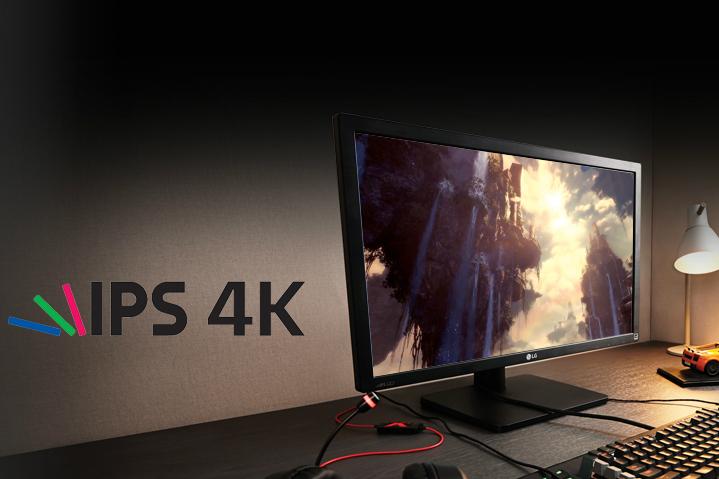
Still, it should be noted that in order to make use of FreeSync, DisplayPort is required, whether it be the mini or full-sized edition of the interface. Fortunately, though, the monitor does incorporate two HDMI inputs, with at least one donning 2.0 support.

Also targeting gamers, LG has highlighted a wide array of split-screen options for players seeking to take advantage of multiple inputs simultaneously on a single display as well as a gaming mode which presents minimal input lag at only 9.7 milliseconds.
Offering three gamer modes, two first-person shooter modes, and an RTS pre-set, the panel aims to provide “optimal gaming conditions” based on genre. Meanwhile, its “Enhanced Visibility Black Stabilizer” helps brighten up murkier scenes in games where it’s difficult for players to see their surroundings.

Through the process of dithering, the 8-bit panel is capable of delivering 10-bit color, according to company specifications. Additionally, the monitor is configured to display 99% of the sRGB color spectrum.
Disappointingly, the panel encompasses a refresh rate of only 40 – 60Hz, which isn’t great when compared to other monitors like it on the market. Then again, achieving frame rates over 60 FPS at the display’s native 3840 x 2160 resolution would likely be uncommon enough to justify the compromise.

LG’s 27-inch 4K display will arrive later this month on Amazon, Fry’s, Micro Center, and B&H storefronts at the MSRP of $599.
Editors' Recommendations
- AMD is finally taking FreeSync to the next level
- Asus’ 4K, 32-inch mini-LED gaming monitor might hit the perfect sweet spot
- Lenovo unleashes an avalanche of monitors, including a 4K 144Hz beast
- LG debuts two new CineBeam 4K HDR projectors
- Acer’s TV-sized Predator gaming monitor is OLED, 4K, and living room-ready


